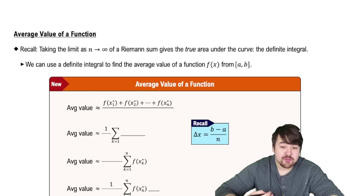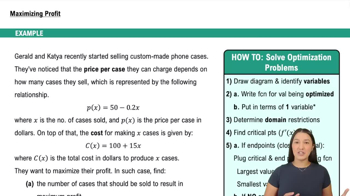Consider the following cost functions.
b. Determine the average cost and the marginal cost when x=a.
C(x) = − 0.01x²+40x+100, 0≤x≤1500, a=1000
 Verified step by step guidance
Verified step by step guidance Verified video answer for a similar problem:
Verified video answer for a similar problem:



 4:16m
4:16mMaster Intro To Related Rates with a bite sized video explanation from Patrick
Start learning